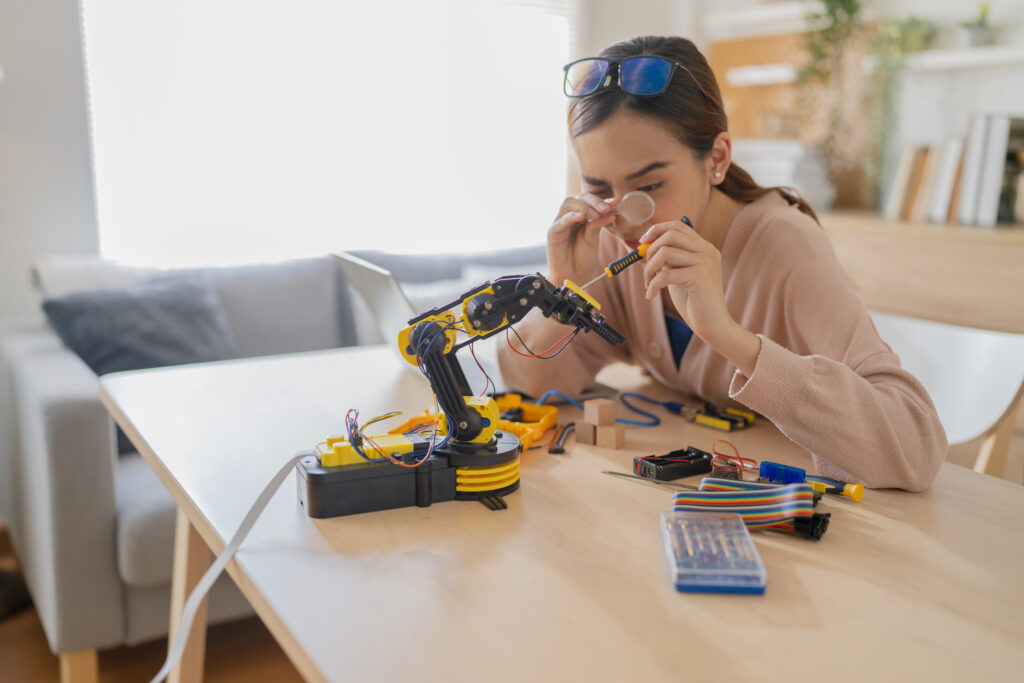Unleashing Potential: How Robotics Impacts Student Learning

Robotics has emerged as a transformative force in education, revolutionizing the way students engage with STEM subjects. Beyond being a fun and exciting activity, robotics has a profound impact on student learning, fostering skills and competencies that extend far beyond the realm of robotics itself.
Enhancing STEM Proficiency:
Robotics serves as a gateway to STEM education, providing hands-on experiences that make abstract concepts tangible and relatable. Through robotics projects, students apply scientific principles, explore engineering design processes, and develop mathematical reasoning skills, thereby enhancing their overall proficiency in STEM subjects.
Fostering Critical Thinking and Problem-Solving:
Robotics projects inherently involve challenges and obstacles that require creative problem-solving. Students must analyze problems, brainstorm solutions, and
iterate on their designs, fostering critical thinking and problem-solving skills. As they encounter setbacks and failures, students learn resilience and perseverance, essential qualities for success in academics and beyond.
Promoting Collaboration and Teamwork:
Robotics projects often require collaboration and teamwork, mirroring real-world work environments. By working in teams, students learn to communicate effectively, delegate tasks, and leverage each other’s strengths, fostering interpersonal skills that are invaluable in collaborative settings.
Cultivating Creativity and Innovation:
Robotics encourages students to think outside the box and unleash their creativity. From designing robots to programming them to perform specific tasks, students have the freedom to explore their ideas and experiment with innovative solutions. This process of creative exploration nurtures a culture of innovation and empowers students to become confident problem-solvers and inventors.
Bridging Theory with Practice:
Robotics bridges the gap between theoretical knowledge and practical application. Students apply concepts learned in the classroom to real-world challenges, gaining a deeper understanding of how academic concepts manifest in tangible outcomes. This hands-on approach to learning not only reinforces theoretical knowledge but also instills a sense of relevance and applicability to academic subjects.
Building Confidence and Self-Efficacy:
Robotics empowers students to take ownership of their learning and develop a sense of confidence in their abilities. As students successfully design, build, and program robots to accomplish tasks, they experience a sense of accomplishment and mastery, bolstering their self-efficacy and motivation to tackle new challenges.
In conclusion, robotics has a profound impact on student learning, enriching their educational experiences and equipping them with essential skills and competencies for success in the 21st-century workforce. By integrating robotics into education, educators empower students to become lifelong learners, critical thinkers, and innovative problem-solvers, poised to make meaningful contributions to society. As we continue to embrace the transformative potential of robotics in education, let us nurture the next generation of STEM leaders and changemakers through the exciting world of robotics.
